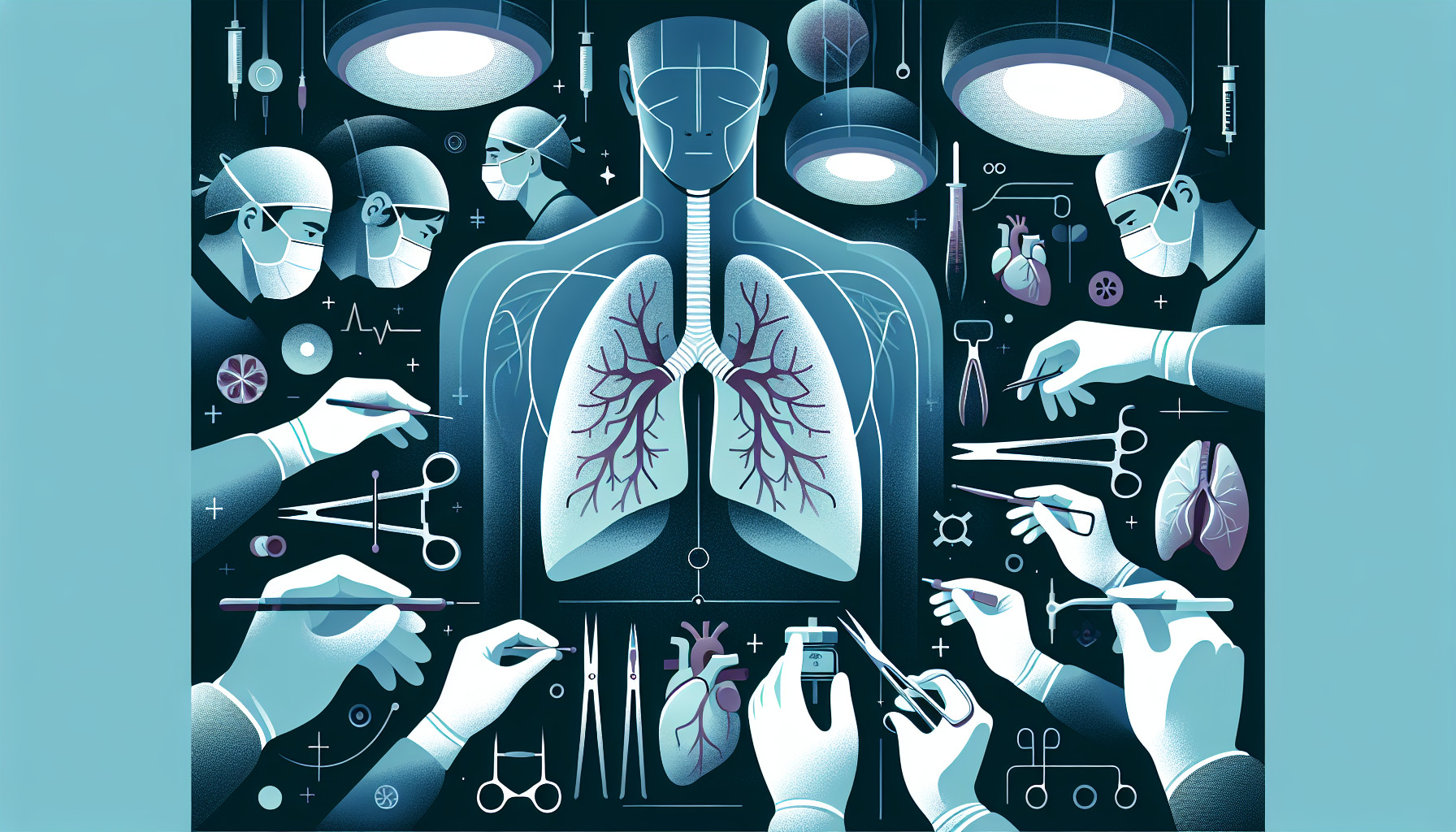Our Summary
This research paper is a study conducted on lung transplant patients from 2006 to 2017. The study found that at least 20% of these patients will be diagnosed with some form of cancer within five years after their transplant. The study also found that patients who had cancer before their transplant are more than three times as likely to develop cancer after their transplant, compared to patients who did not have cancer before their transplant. However, the cancer that develops after the transplant is usually not related to the cancer the patient had before the transplant. This finding emphasizes the need for regular cancer screenings for lung transplant patients, especially for those who had cancer before their transplant.
FAQs
- What percentage of lung transplant patients are likely to be diagnosed with cancer within five years after their transplant according to the study?
- Are patients who had cancer before their lung transplant more likely to develop cancer again after the transplant?
- Is the cancer that develops after the lung transplant usually related to the cancer the patient had before the transplant?
Doctor’s Tip
One helpful tip a doctor might give a patient about lung transplant is to adhere strictly to their prescribed medication regimen and attend all follow-up appointments. This is crucial for maintaining the health of the transplanted lung and preventing complications such as rejection. Additionally, it is important for patients to avoid exposure to tobacco smoke and other environmental factors that can harm the lungs. Maintaining a healthy lifestyle, including regular exercise and a balanced diet, can also help improve overall lung function and recovery post-transplant.
Suitable For
Patients who are typically recommended for a lung transplant are those with end-stage lung disease that cannot be effectively treated with other medical interventions. This includes patients with conditions such as:
- Chronic obstructive pulmonary disease (COPD)
- Idiopathic pulmonary fibrosis
- Cystic fibrosis
- Pulmonary hypertension
- Alpha-1 antitrypsin deficiency
- Bronchiectasis
- Interstitial lung disease
These patients typically have severe difficulty breathing, decreased lung function, and poor quality of life despite maximal medical therapy. Lung transplant may be recommended as a last resort treatment option for these patients in order to improve their quality of life and extend their lifespan.
It is important to note that not all patients with end-stage lung disease are suitable candidates for a lung transplant. Patients must undergo a thorough evaluation process to determine if they are physically and emotionally prepared for the procedure and the lifelong commitment to post-transplant care. Additionally, patients with certain medical conditions or risk factors may be excluded from consideration for a lung transplant.
Timeline
Before lung transplant:
- Patient is diagnosed with end-stage lung disease and is referred to a transplant center.
- Patient undergoes extensive evaluation and testing to determine eligibility for a lung transplant.
- Patient is placed on the waiting list for a donor lung.
- Patient waits for a suitable donor match, which can range from days to years.
- Patient undergoes the lung transplant surgery once a donor lung becomes available.
After lung transplant:
- Patient is closely monitored in the hospital for any complications or rejection of the new lung.
- Patient begins the recovery process, which includes physical therapy and rehabilitation.
- Patient must take immunosuppressant medications for the rest of their life to prevent rejection of the new lung.
- Patient attends regular follow-up appointments with their transplant team to monitor their health and adjust medications as needed.
- Patient must adhere to a strict regimen of self-care, including avoiding exposure to infections and maintaining a healthy lifestyle.
- Patient may experience complications or side effects from the transplant, such as infections, rejection episodes, or organ damage.
- Patient may need additional surgeries or treatments for complications that arise post-transplant.
- Patient must undergo regular screenings for cancer and other potential complications associated with long-term immunosuppressant use.
What to Ask Your Doctor
- What is the success rate of lung transplants at your facility?
- What are the potential risks and complications associated with a lung transplant?
- How long is the recovery process after a lung transplant?
- What medications will I need to take after the transplant and what are the potential side effects?
- How often will I need to follow up with you after the transplant?
- What lifestyle changes will I need to make after the transplant?
- How will the transplant affect my ability to work or engage in physical activities?
- What signs or symptoms should I watch out for that may indicate rejection or complications?
- How will the transplant affect my immune system and susceptibility to infections?
- What is the protocol for cancer screenings after a lung transplant, especially if I had cancer before the transplant?
Reference
Authors: Sekowski V, Jackson K, Halloran K, Varughese R, Nagendran J, Weinkauf J, Lien D, Hirji A. Journal: Respir Med. 2022 Jun;197:106855. doi: 10.1016/j.rmed.2022.106855. Epub 2022 Apr 20. PMID: 35483168
